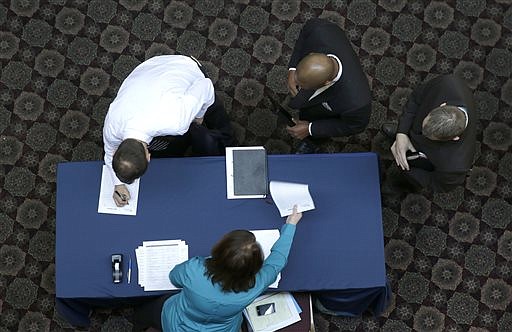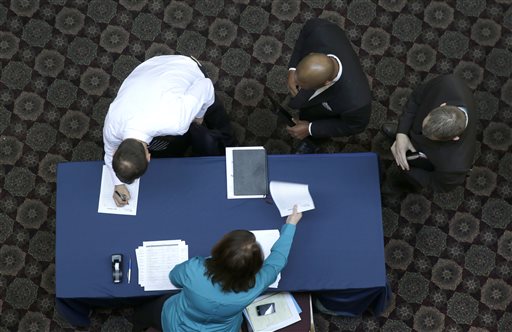WASHINGTON - Weekly applications for U.S. unemployment benefits rose 19,000 last week to 348,000, the highest in about a month. But the broader trend in applications remains low.
The Labor Department says that the four-week average, a less volatile measure, increased just 750 to 333,000. The increase follows three weeks of declines.
The average is close to pre-recession levels and suggests that, despite last week's rise, layoffs remain low. Last week's figure may also have been pushed up by cold weather, which can cause construction firms to stop work.
"We expect claims to head back below the 330,000 mark over the next few weeks," said Ian Shepherdson, an economist at Pantheon Macroeconomics, a forecasting firm.
Hiring will need to pick up to reduce the unemployment rate, which is still high at 6.7 percent. Employers added just 74,000 jobs in December, the fewest in three years and far below the average of 214,000 added in the previous four months. Most economists forecast that hiring will rebound in January to roughly the 185,000 average monthly gains of the past two years.
The unemployment rate fell in December to 6.7 percent from 7 percent. Much of the decline was due to the fact that 347,000 unemployed people stopped looking for work. Once people without jobs stop trying to find one, they're no longer counted as unemployed.
About 3.6 million people received benefits in the week ended Jan. 11, the latest data available. That's about 123,000 fewer than the previous week. That total has fallen 39 percent in the past year.
A key reason for that drop: About 1.4 million people lost extended unemployment benefits after a 5-year old emergency federal program expired Dec. 28. The program provided up to 47 extra weeks of unemployment aid paid for by the federal government.
In Tuesday's State of the Union address, President Barack Obama urged Congress to extend the program. But congressional Democrats haven't been able to reach agreement with Republicans on how to offset the estimated $6 billion cost for a three-month extension.
There are some signs the economic growth is picking up. The economy expanded at a healthy 3.2 percent annual rate in the October-December quarter. That followed even better 4.1 percent growth in the July-September period. Consumers boosted their spending at the fastest pace in three years in the fourth quarter.
Consumer confidence rose in January, a sign that Americans may continue to spend more this year. Factory output rose for a fifth straight month in December.
Not all recent signs have been positive. The savings rate fell in the fourth quarter compared with the third, which means Americans are saving less in order to spend more. And businesses placed fewer orders with U.S. factories in December for machinery and other capital goods.

